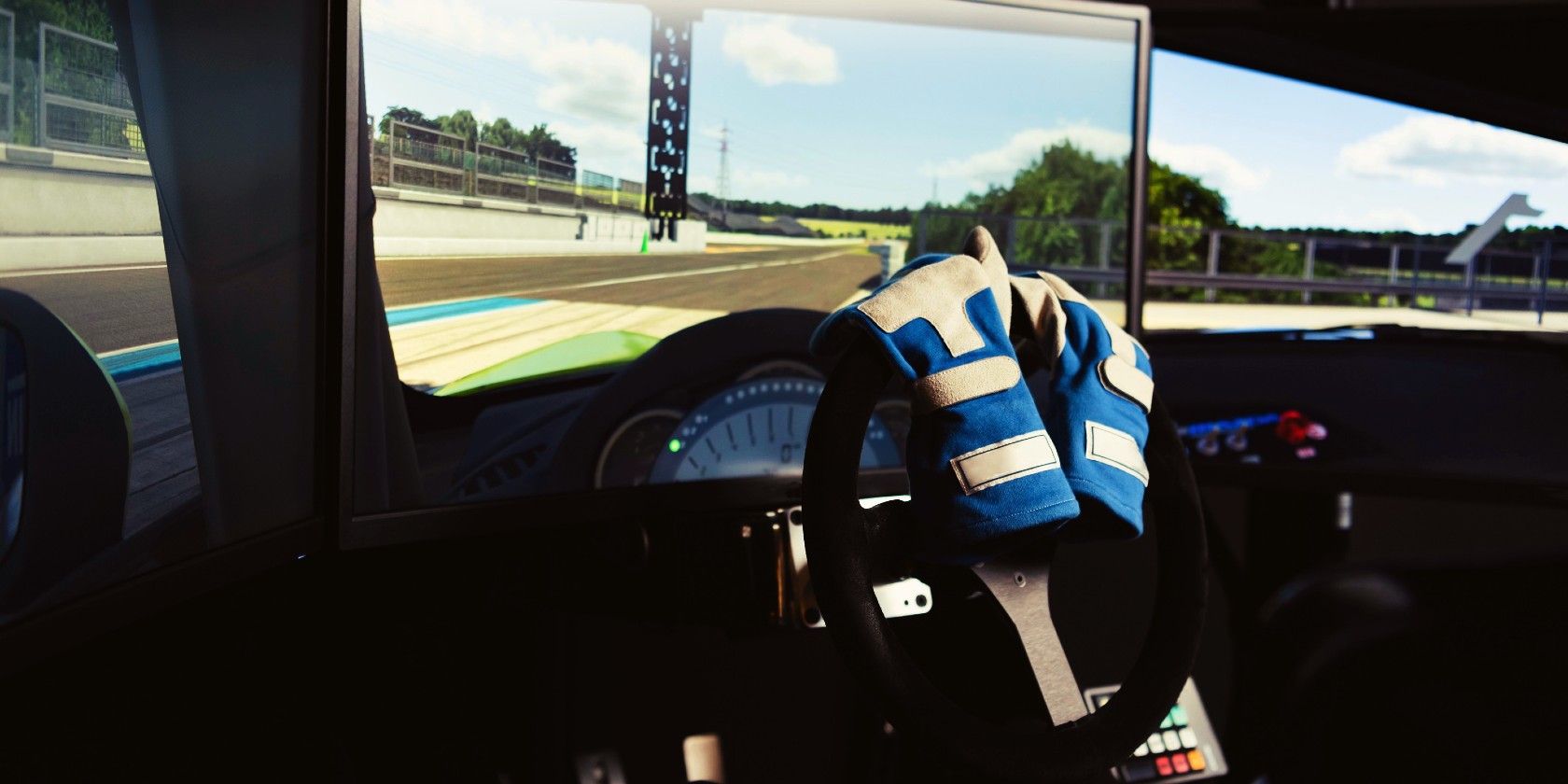A big part of our enjoyment of games is immersion, allowing yourself to delve into a virtual world as if you were really there. One thing that can increase your immersion is the simulation of real-world physical touch, bringing you close to the virtual world.
That’s where force feedback and haptic feedback step in.
So, what is force feedback and haptic feedback? Are force and haptic feedback different?
What Is Force Feedback?
Force feedback is a simulation of virtual world events using motors or resistance in a joystick, steering wheel, or standard controller. If you’ve played any video game console from the PlayStation 1 onwards, you’ve experienced force feedback when your controller vibrates as you bounce over the curbs in a racing game or blast a shotgun in a first-person shooter.
The first force feedback devices appeared in the 60s and were nothing to do with the emerging video game industry. Instead, force feedback systems were implemented in nuclear research laboratories, allowing scientists to experience the forces at play in potential industrial processes.
“The standard set-up, still used today, was to confine radioactive materials in an airtight chamber, and manipulate them remotely (at a few meters’ distance) through cable-driven systems similar to pantographs. Because of the non-repetitive nature of the operations, and the needs for intelligent reactions in case of incident, it was not possible to use purely automatic systems, and the man-in-the-loop approach was considered the only solution, as is still the case today. Force-feedback means the possibility for the user to feel the forces exerted in the remote environment.” - Source
Another early implementation of force feedback came in large aircraft. Manufacturers would install a servomechanism system that responds to negative flight scenarios. For example, if the airplane is pointing too high and likely to begin stalling, the servomechanism provides physical force feedback to the pilot that something is about to go wrong.
Force feedback systems are now closely associated with video games and virtual reality experiences. But force feedback systems are still in use in scientific and industrial applications throughout the world, and even in space programs.
What Is Haptic Feedback?
Haptic feedback is similar to force feedback but typically uses a smaller vibration to provide a subtle, responsive experience. Haptic feedback is more closely associated with wearable technology and active touch systems.
For example, you can purchase a wearable haptic feedback vest for use with virtual reality experiences and games. When something happens to you in the game, the entire vest gently vibrates. At the top end of the scale, the haptic feedback vest will only vibrate in a single area, perhaps simulating the shot from an arrow hitting you in a medieval battle game.
Haptics Stimulate the Senses
Haptic feedback (or just “haptics”) replicates different feedback sensations, too. Virtual reality experiences remain a prime example of haptics. Within the VR experience, you can pick items up, look at them, feel them, throw them, and so on. But there is no weight to the object, and there is no response from your own hand to the virtual object.
To fix that problem and create great immersion, you can use something like HaptX Gloves, which simulate the touch, feel, shape, and texture of a virtual object in your hand. You can even feel the weight of the object, up to a point, while the fingers provide resistance to the touch, as your own fingers do.
Haptic gloves aren’t the only haptic feedback technology bringing virtual environments to life. There are also shoes, full bodysuits, and vests.
Plus, haptic feedback is in use elsewhere. As haptics aim to stimulate senses, haptic feedback hats can incorporate GPS and compasses, assisting those with visual impairments to navigate the outside world a little more freely.
What Is Tactile Feedback?
Tactile feedback is similar to haptic feedback, where a device provides a feedback mechanism in response to user input. The most common tactile feedback type comes from your smartphone. When you tap your smartphone screen, your device gives a small tactile buzz informing you that your input registered correctly.
You’ll find tactile feedback across a huge number of devices, such as appliances, tablets, in-car entertainment systems, and much more.
How Does Force Feedback Work?
Most force feedback systems respond to user input in the digital environment and provide an appropriate feedback level.
The actual force feedback, the rumbling feeling, comes from a small servomotor in the controller. Check out the following video of an Xbox One wireless controller teardown.
At the bottom of each hand grip area are two motors. When something happens in the game that warrants feedback, these two motors spin in response.
Force feedback systems differ depending on the technology. The force feedback you find in a video game controller varies from the system you’ll find in a sim racing wheel. One of the biggest differences in the force feedback and the application of force in the device.
A joystick or sim racing wheel can use a belt pulley or gear train system to provide resistance to the user input and amplify the force of the motor in the device. Check out the following video in which sim-racer Jimmy Broadbent experiments with force feedback, cranking the dial up to 100.
The servomotors in your Xbox or PlayStation controller vibrate and simulate movement or a direct hit. Whereas, the force feedback system in the sim racing wheel (and found in other devices) is vastly more powerful, providing both active feedback to your in-game experience as well as simulating the response, resistance, and drive of the wheel in your hands.
Technology progresses, however, and force feedback is no different. The PlayStation 5 DualSense controller features adaptable trigger resistance, simulating varying levels of resistance through force feedback.
Are Force Feedback and Haptic Feedback Different?
Force feedback and haptic feedback are similar systems that deliver a different experience. Force feedback is very much about providing a physical response to events happening in a virtual world or controlled environment that the user could not experience otherwise. Haptic feedback focuses on providing feedback for senses, such as the small vibrations on your smartphone or gentle feedback while wearing a haptic feedback vest.
As haptic feedback technology evolves, expect more radical implementations of the technology. Or rather, expect existing implementations to become much cheaper and accessible to a wider audience. I look forward to a time where all games require a full-body haptic response suit for total immersion in the virtual world.
About The Author

